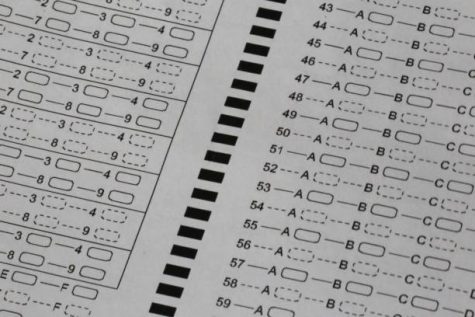Standardized Dissatisfaction
February 19, 2022

In the course of its nearly century-long history as the foremost standardized test for American high schoolers, the SAT has undergone major changes: in 1936, administrators split the exam into two sections; in 1994, calculators were first allowed on math, and in 2016, the original 1600 point grading scale replaced the 2400 version after just ten years. Now, for the first time ever, students will take the test fully online by 2024, according to NPR. Additionally, the test will only be two hours long and calculators will be allowed on both math sections. The decision follows a lengthy debate over the test’s evaluative significance and fairness, one the standardized test seems to be losing: thousands of universities have moved to test-optional admissions processes since the start of the COVID-19 pandemic, according to US News and World Report, and the University of California system no longer accepts the SAT or ACT on applications. Indeed, it seems that the SAT’s online move represents one last-ditch effort to keep it relevant in American high schools and colleges. If this is truly the case, we won’t see the test around for much longer. Because of its lack of concrete changes, the shift is an incomplete solution that attempts to modernize the test without actually solving any of its most pressing problems.
At first glance, the new changes from the College Board seem considerable—especially because of the significant physical difference between a paper and laptop in our minds—but the new SAT isn’t as different as one may think. The 1600 scale remains in place despite the shorter testing time, and students will still be in proctored schoolrooms while taking the test. It is reasonable to view the new SAT, then, simply as an extension of the old one without any marked changes. It isn’t at all clear how moving most of the old SAT online and shortening its length will solve its largest problems, namely those surrounding the content and studying of the test itself. The same resources that allow more affluent students to typically score higher on the paper test—specialized tutoring and access to in-depth analysis of practice tests most importantly—will still be in place on the online version. In fact, if studying materials like practice tests move online to mimic the SAT, there may be more disadvantages for students without immediate access to computers or the internet. This makes the test’s online move inadequate at best and harmful at worst, and lets the worst parts of standardized testing simply switch from on paper to online.
The SAT’s relationship to the ACT, the alternative standardized test in American colleges, is another important dynamic in its new change. Owned by a completely separate company from the College Board, the ACT represents the SAT’s largest competitor—in 2020 the former tested 1.7 million students while the latter tested 2.2 million, and the number is expected to keep rising—and is still taken mostly on paper. If the ACT doesn’t also go online in the coming years, the choice for students over which test to take becomes more complicated than in previous years, when certain students might have simply opted for the ACT for its science section. How high schools and colleges will now compare the tests remains unknown. Some will maintain that the ACT’s longer reading passages and geometry-heavy math sections better test the endurance needed for college coursework, and others will argue that modern academics require more technology and adaptiveness to different problems the SAT presents. Such opinions may vary across individual students, school districts and college admissions officers; there is no telling how different individuals will view the two tests under current rules. This dynamic will ensure that the biggest problems in standardized testing will just move from one test to another.
If the College Board wants to keep its decades-long control of the standardized testing world, they will have to do better by revitalizing the SAT’s content in original, important ways—not just putting the same test on a screen instead of paper.






























